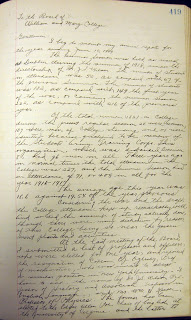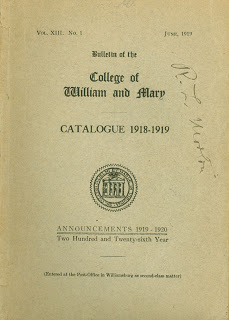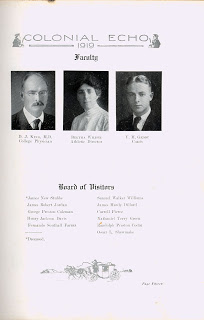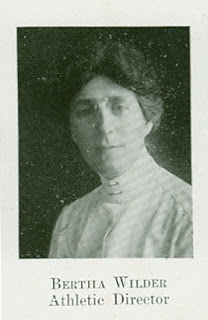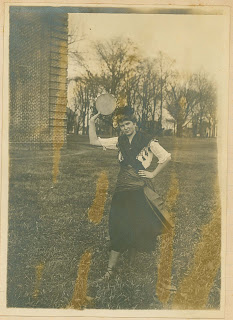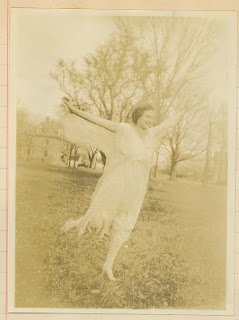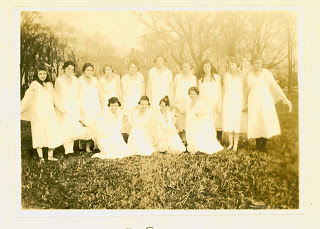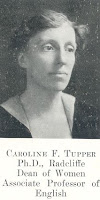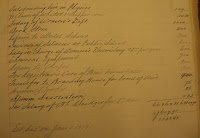The College of William and Mary did not decide on a whim to admit women. While the College was busily preparing for the first co-ed incoming class, there was a war raging across the Atlantic in Europe.
World War I had begun four years earlier, and the United States joined the previous year, 1917. In the summer of 1918, the country was unsure of how long the war would continue, and had to prepare for the worst. The College's admissions were probably dropping as prospective and returning William and Mary students were being shipped off to the European front, and something had to be done to try to raise or at least maintain enrollment at the small institution.
On August 10, 1918, previous male students of the College received a letter from the registrar H.L. Bridges urging them to return to William and Mary. The registrar stated that he understood that "there seems to be some doubt in the minds of students as to what they should do next session," but urged them to enroll for the fall semester. Why would the registrar be urging possibly needed soldiers to stay on the homefront? The registrar's letter went onto explain that "provision is being made to train all college students while they are doing their regular [college] work....The War Department wants you in college next year."
Instead of shutting down the educational opportunities for the men who had not been drafted, and possibly saving small colleges, such as William and Mary from closing their doors, the United States government wanted to keep their prospective soldiers prepared for possible deployment as well as educated.
The registrar may have also been pushing this new option on returning male students to possibly offset the effect of women coming on campus. If women did not make up a significant percentage of the incoming class, than their influence in the fall would be limited or not even felt. Also, co-education was still an untried experiment. If the experiment did not work out, and the war continued for multiple years, then the College might have been in an enrollment bind from which it could not free itself.
However, none of the worst case scenarios came to pass. World War I ended in November 1918, and co-education at the College was successful. But, it is interesting to see how people were reacting to and preparing for the unforeseen continuation of World War I.
The letter cited in this post is available in the folder "World War I" in the
University Archives Subject File Collection in the Special Collections Research Center.
This post was composed by Jordan Ecker.For additional information about the first women students at the College of William and Mary see: When Mary Entered with her Brother William: Women at the College of William and Mary, 1918-1945 by Laura F. Parrish; "The Petticoat Invasion": Women at the College of William and Mary, 1918-1945; The Martha Barksdale Papers; and the Women at the College of William and Mary page on the Special Collections Research Center Wiki.
